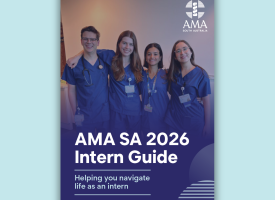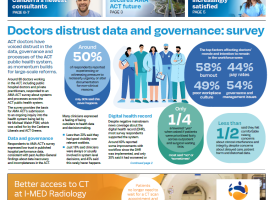AMA welcomes Coalition’s focus on rural health workforce
The Australian Medical Association welcomes the Coalition’s strong focus on supporting the country’s rural health workforce with its $100 million funding commitment.

The substantial investment proposed by the Coalition today would support several policy measures, including support for a rural, regional and remote health strategy to be developed by the National Rural Health Commissioner.
AMA President Dr Danielle McMullen said this important measure could sharpen the focus on key issues affecting rural areas and ensure they are addressed through a coordinated and evidence-based approach.
“We are glad to see rural health feature prominently in the Coalition’s election campaign, as this is an area the AMA has been extremely active in as we continue to push for reforms that benefit our rural communities,” Dr McMullen said.
“We are pleased to see a commitment to support upgraded infrastructure in regional and rural training facilities, as a good training experience for both medical students and doctors is one of the keys to ensuring that more doctors live and work in these areas.”
Dr McMullen acknowledged the Coalition’s commitment to increase the number of regional Commonwealth Supported Places, but said it was important to remember medical training does not start and finish at medical school.
“It takes many years of training to be a doctor and if these extra places are to translate into more rural doctors this measure will need to be backed by additional intern, prevocational and GP and non-GP specialist training places all located in regional and rural areas,” she said.
Dr McMullen said today’s announcement was also a reminder that Australia needs an independent workforce planning agency to guide these critical workforce decisions.
“Australia is faced with a situation where no-one knows how many medical students are needed to meet future community need, and policy development is happening in a vacuum,” Dr McMullen said.
“It is confounding that we are seeing a growing number of doctors-in-training unable to access a specialty training place. Something must change.
“Decisions about medical workforce continue to be taken with only limited information. More than ever, we need an independent workforce planning body that provides robust advice to governments about how many doctors we need, which specialties they are needed in and the geographic areas where they are most needed.”
Dr McMullen said it was also important to make better use of Australia’s existing health workforce and called on all parties to provide additional funding for the Workforce Incentive Program to support general practices to employ more nurses and allied health professionals. This important part of the AMA’s Modernise Medicare campaign would ensure patients have better access to care within a well-coordinated, GP-led model.



